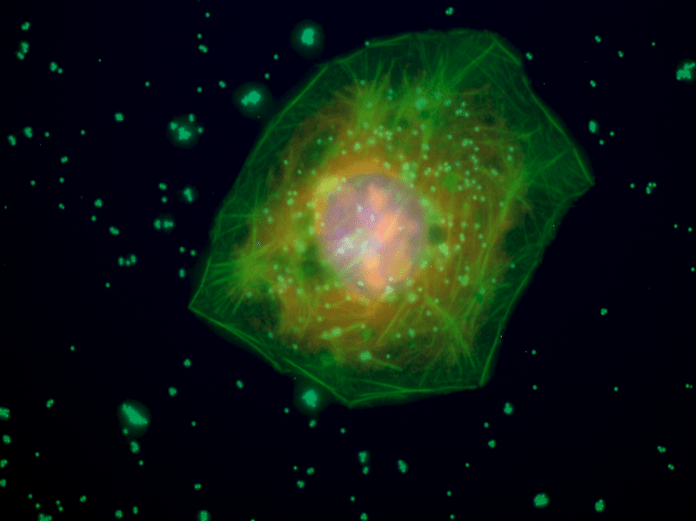A recent study on plastic pollution beyond the micron level has unambiguously detected and identified nanoplastics in real-life samples of bottled water. It was found that the exposure to the micro-nano plastics from regular bottled water is in the range of 105 particles per litre. The micro-nano plastics concentrations were estimated to be about 2.4 ± 1.3 × 105 particles per litre of bottled water, about 90% of which were nanoplastics. Nanoplastics, whose dimension is in the range of 10 -9 meter, are small enough to easily cross even blood-brain barrier and placenta barrier and may have far reaching consequences on human health.
In a study conducted in 2018, researchers investigated globally sourced brands of bottled water for microplastic contamination using Nile Red tagging. They found an average of 10.4 microplastic particles more than 100 µm (1 micron or micrometer = 1 µm = 10⁻⁶ meter) in size per litre of bottled water. Particles smaller than 100 µm could not be confirmed to be plastic due to limitation of spectroscopic analysis however dye adsorption indicated so. Such smaller particles (in the size range 6.5µm –100 µm) were, on an average, 325 in number per litre of bottled water.
Researchers have now overcome the technical limitation of spectroscopic analysis in studying particles smaller than 100 µm. In a recent study, they report development of powerful optical imaging technique with an automated identification algorithm that can identify and analyse plastic particles in nano size range (1 nanometer = 1 nm = 10-9 meter). Study of bottled water using the newly developed technique revealed per litre of bottled water has about 2.4 ± 1.3 × 105 plastic particles, about 90% of which are nanoplastics. This is much more than microplastic reported in the earlier study.
This study not only adds to plastic pollution knowledge base but suggest that the fragmentation of plastics continues further at nano level from micro level. At this level, plastics can cross the biological barriers such blood-brain barrier and placenta barrier and enter biological systems which is a cause of concern for human health.
Evidence on potential toxicity of nanoplastics and harm to human health is limited however there are indications about their involvement in physical stress and damage, apoptosis, necrosis, inflammation, oxidative stress and immune responses.
***
References:
1. Mason S.A., Welch V.G. and Neratko J. 2018. Synthetic Polymer Contamination in Bottled Water. Frontiers in Chemistry. Published 11 September 2018. Sec. Analytical Chemistry Volume 6. DOI: https://doi.org/10.3389/fchem.2018.00407
2. Qian N., et al 2024. Rapid single-particle chemical imaging of nanoplastics by SRS microscopy. Published 8 January 2024. PNAS. 121 (3) e2300582121. DOI: https://doi.org/10.1073/pnas.2300582121
3. Yee M.S. et al 2021. Impact of Microplastics and Nanoplastics on Human Health. Nanomaterials. Volume 11. Issue 2. DOI: https://doi.org/10.3390/nano11020496
***






































